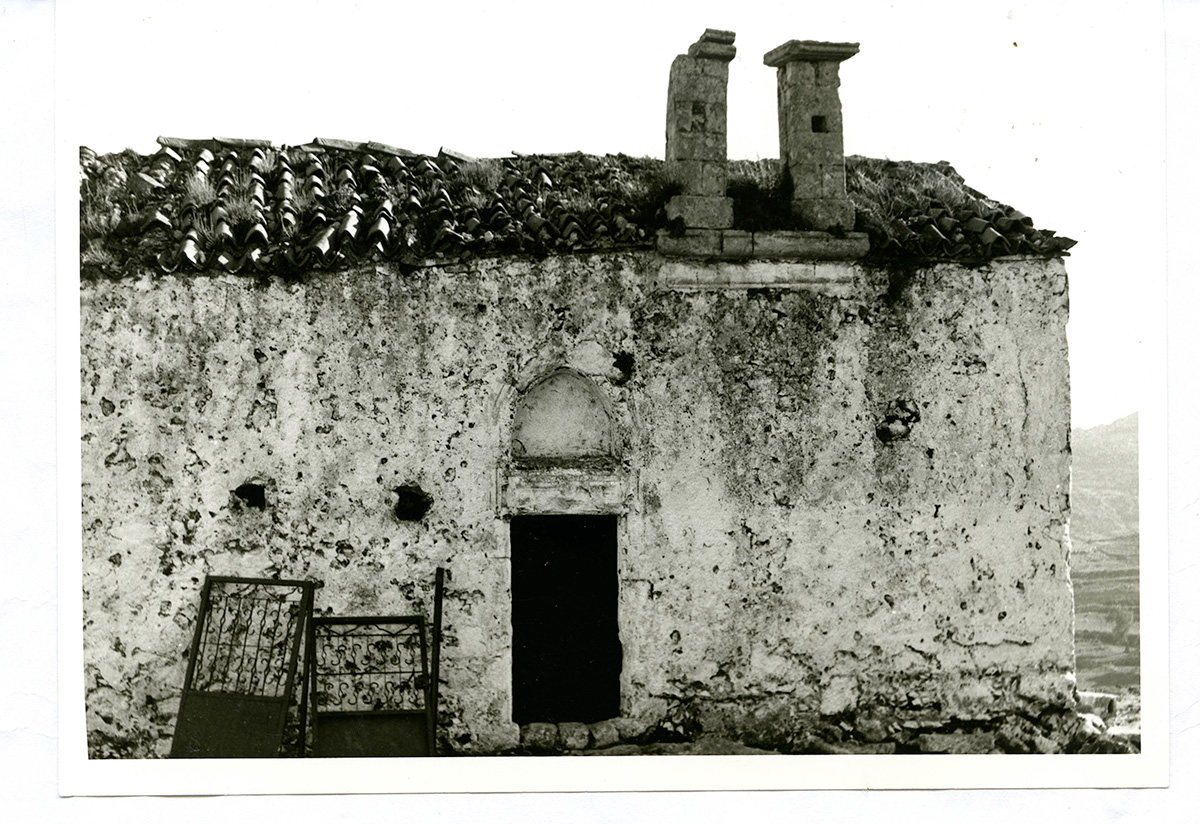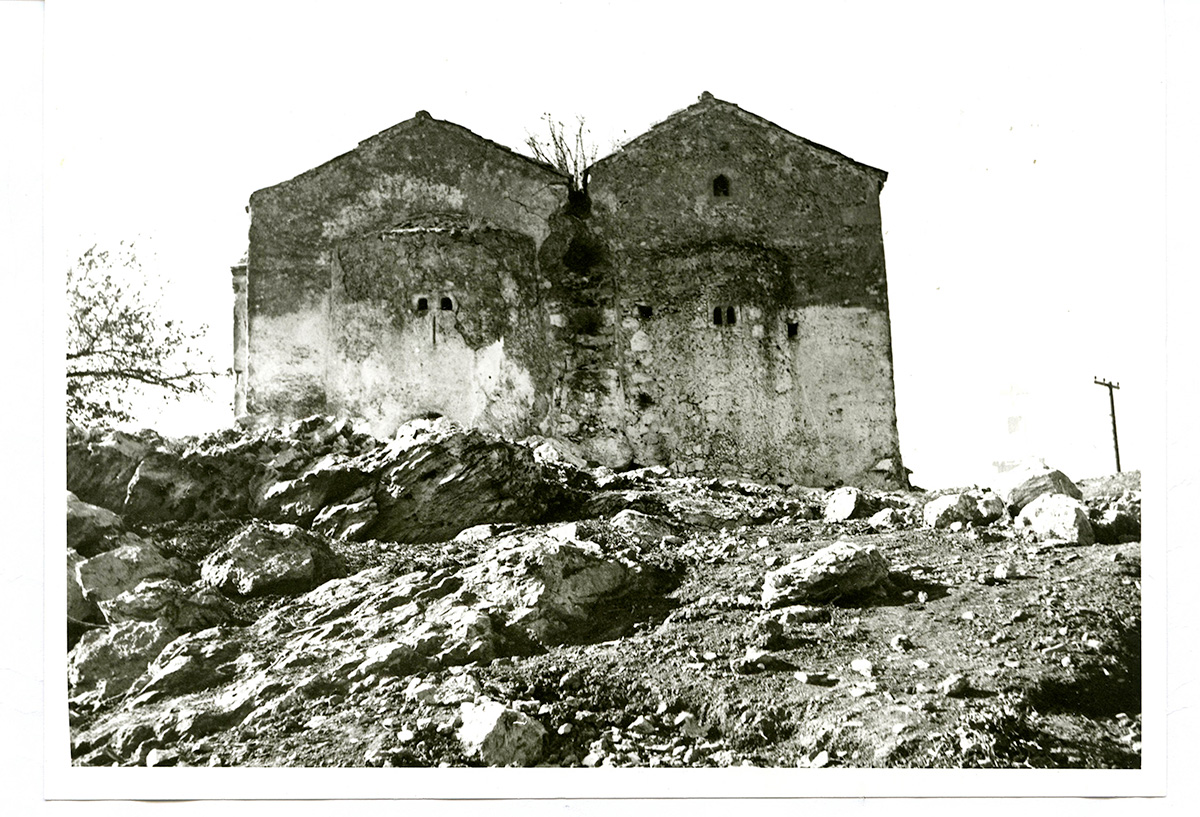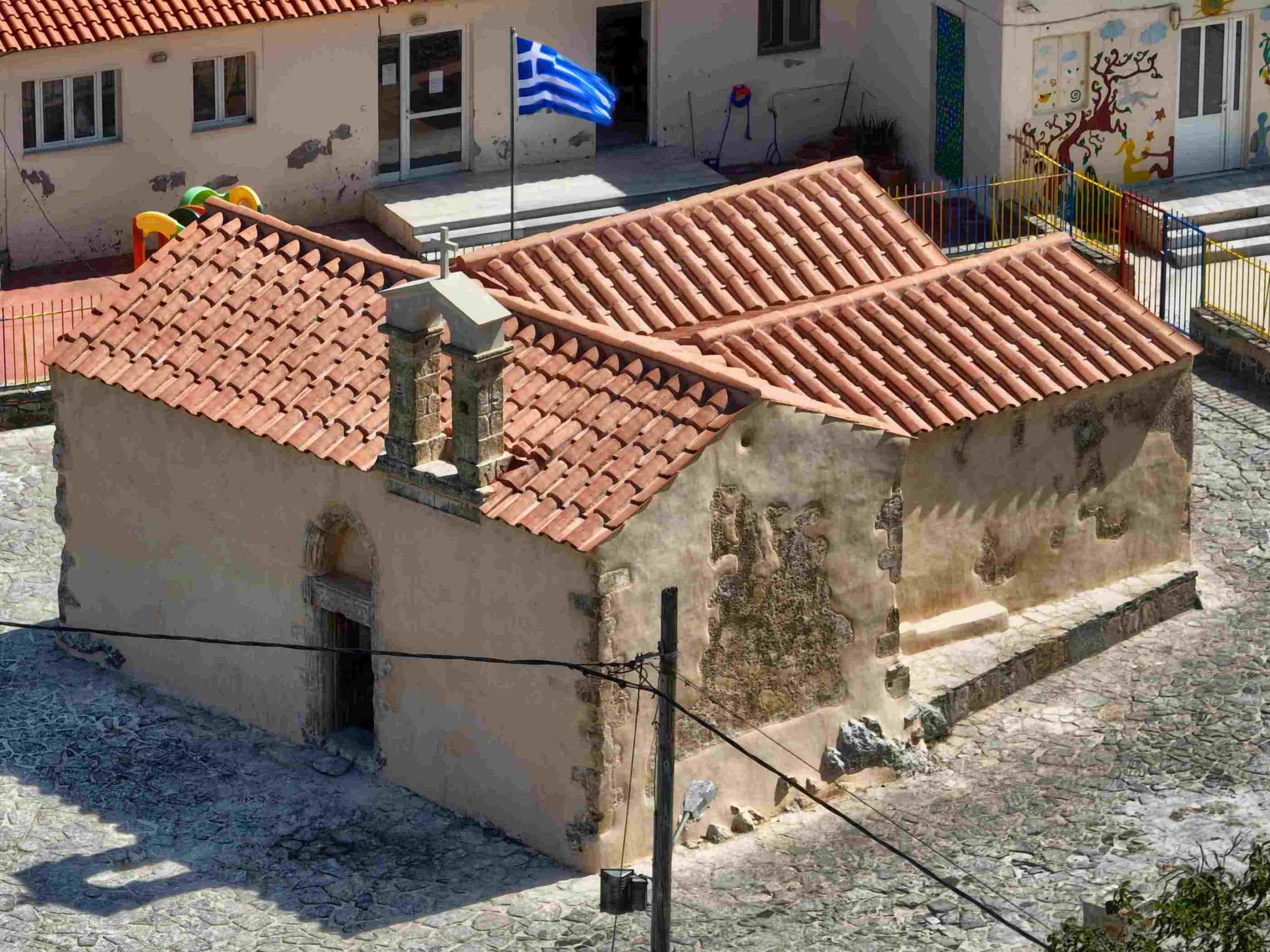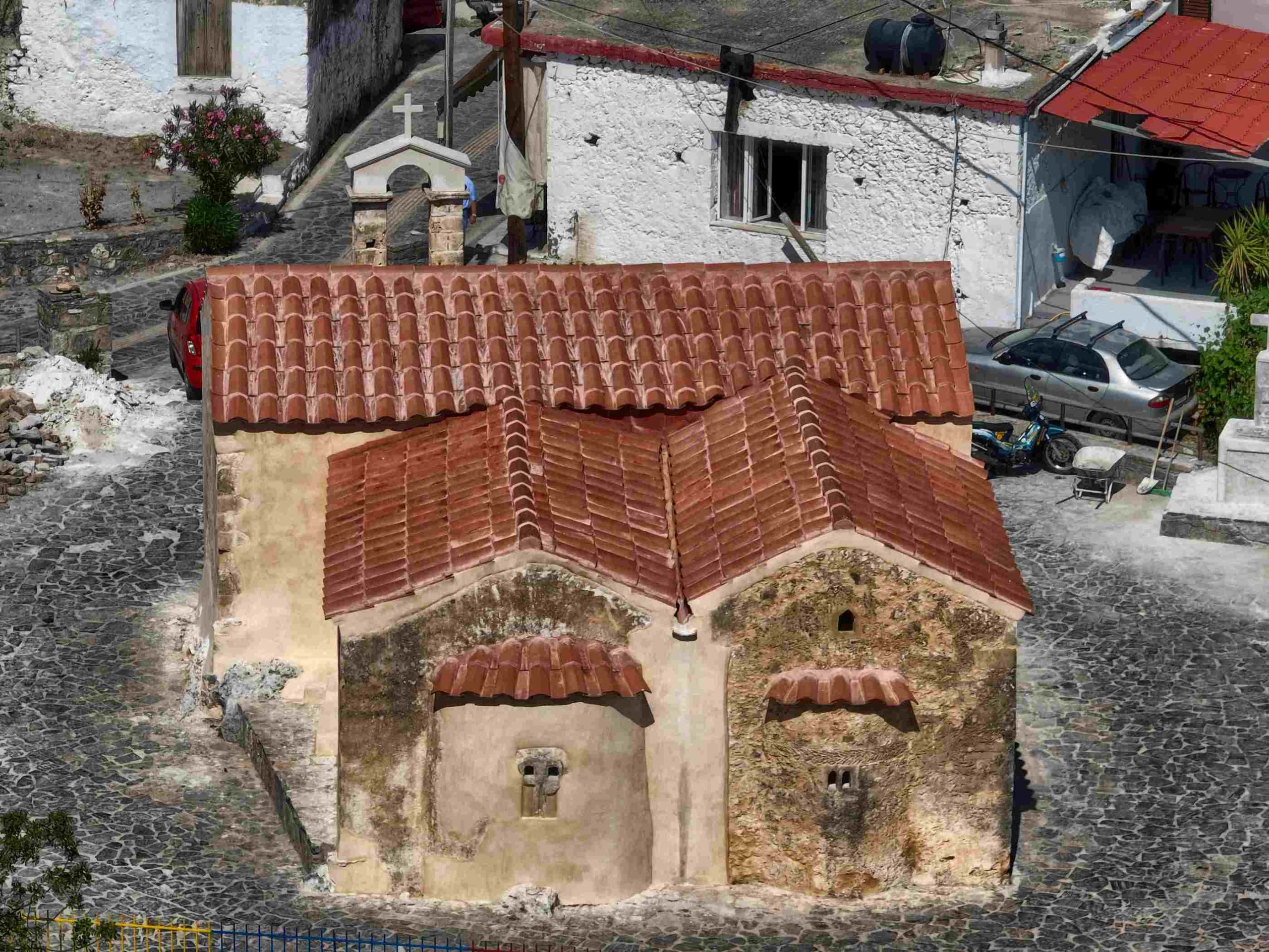
View of the church from the east.
Livadia, church of Archangel Michael and Panagia (Virgin Mary)
The church of Archangel Michael and Panagia (Annunciation of the Virgin) is a double church with a wide narthex to the west. It was built in three phases. First, in the 14th century, a single-nave, barrel-vaulted church dedicated to Archangel Michael was constructed; then, in the late 14th or early 15th century, a transverse narthex was added to the west of the original building; and in a third phase, in the early 17th century, the north nave was added, giving the building its current form. The original church and narthex are decorated with frescoes. At the entrance to the narthex there is a relief coat of arms of the Kallergis family, while another painted coat of arms of the same family was recently revealed inside the narthex.
The original church
The wall paintings of the original southern church are preserved in a fragmentary state.
Traces of the Deesis (Christ flanked by Virgin Mary and Saint John the Baptist) are preserved on the apse. On the front of the eastern wall, the archangel Gabriel from the scene of the Annunciation is preserved and below him is the figure of the first martyr, Stephen. Scenes from the Christological cycle are arranged on the church's barrel vault: the Nativity, Presentation in the Temple, Baptism, Transfiguration, Entry into Jerusalem, Crucifixion, Resurrection (Anastasis) and probably the Ascension. Busts of saints are depicted in medallions in the register below the Christological scenes. In the lowest part of the wall, there would have been the figures of standing saints, which today are not preserved. On the south wall, the figure of the Archangel Michael holds a privileged position under a painted arch, and besides him, some fragments of a figure without a halo, perhaps belonging to a donor.

The frescoed church dedicated to Archangel Michael.
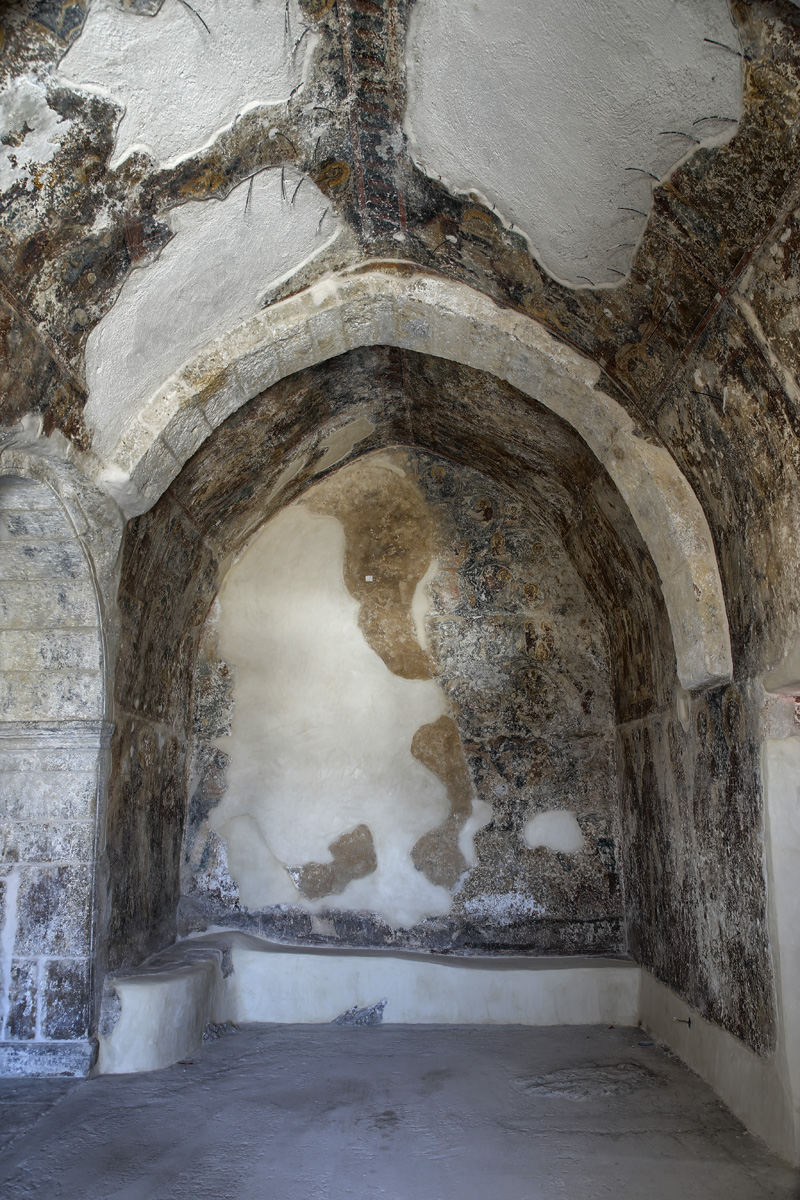
The narthex with the wall paintings.
The narthex
The church's narthex is adorned with frescoes depicting the cycle of the Last Judgment, scenes from the childhood, the miracles and the post-resurrection appearances of Christ, as well as episodes from the cycle of the Archangel Michael, figures of saints, and a monumental depiction of the Tree of Jesse- the genealogical tree of the incarnation of Christ.
Narthex: engraved inscription of the historiographer Manuel
Next to the depiction of Saint Anthony in the narthex, an engraving with the name of Manuel, the historiographer (i.e. painter), was revealed. The engraved inscription, rather than an elaborate painted one, suggests that it was added after the completion of the wall paintings. Therefore, Manuel cannot be identified as the painter who decorated the narthex; he is most likely a visitor to the church who marked his presence in this way.
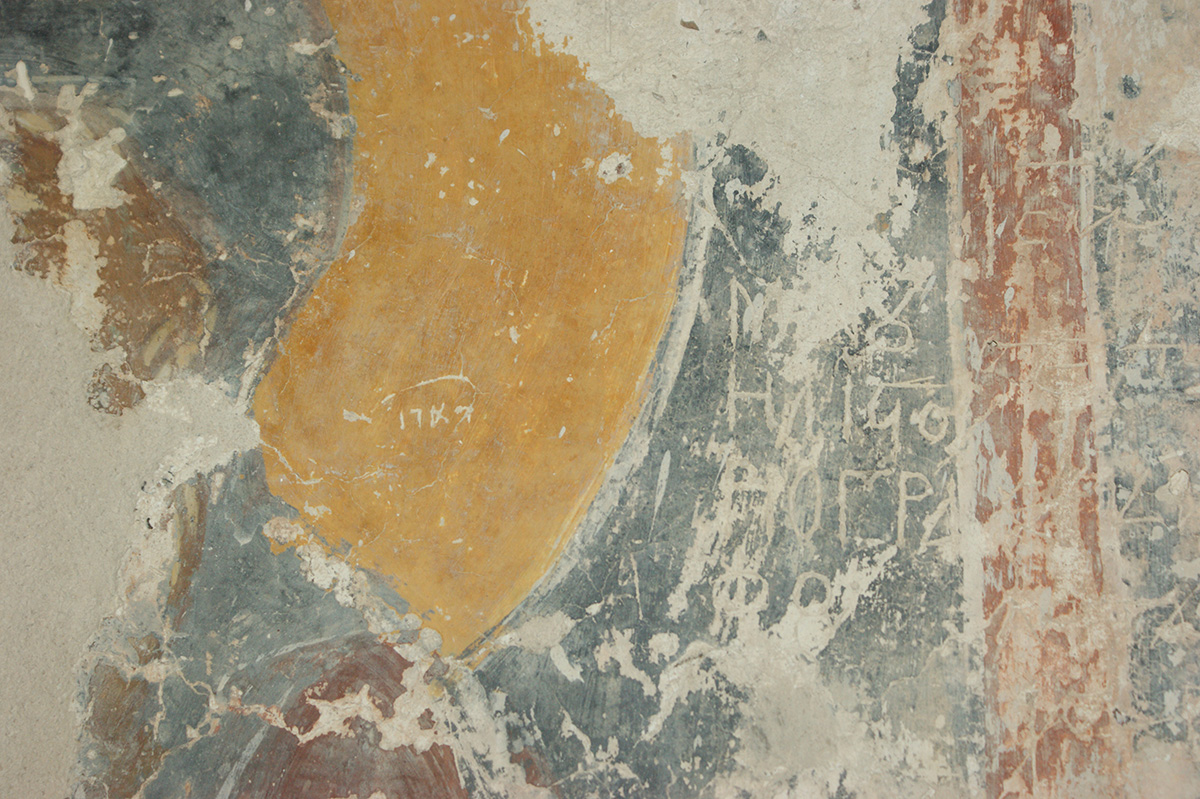
Engraved inscription (graffiti) of the historiographer (painter) Manuel.
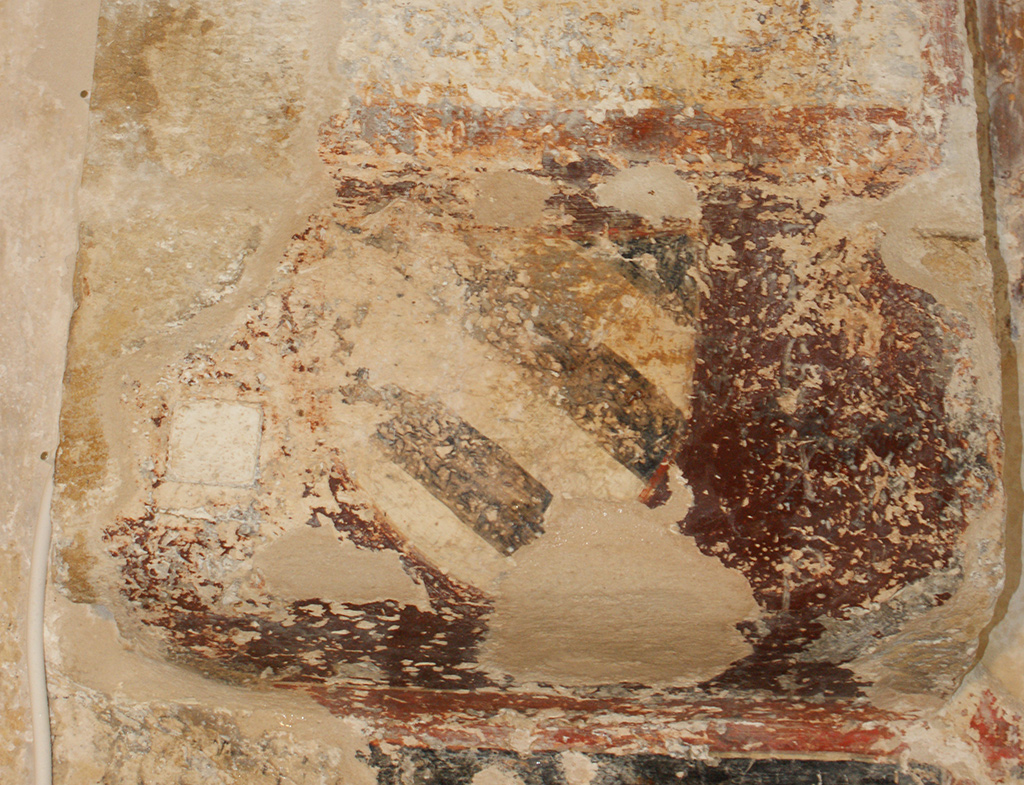
The painted coat of arms of the Kallergis family.
Narthex: coat of arms of the Kallergis family
Narthex: Joseph's dream
In the central part of the narthex are arranged scenes of Jesus's childhood, including a notable representation of Joseph's Dream. In it, the Angel of the Lord instructs Joseph to flee with his family to Egypt. The representation is accompanied by a lengthy inscription from the corresponding biblical passage.
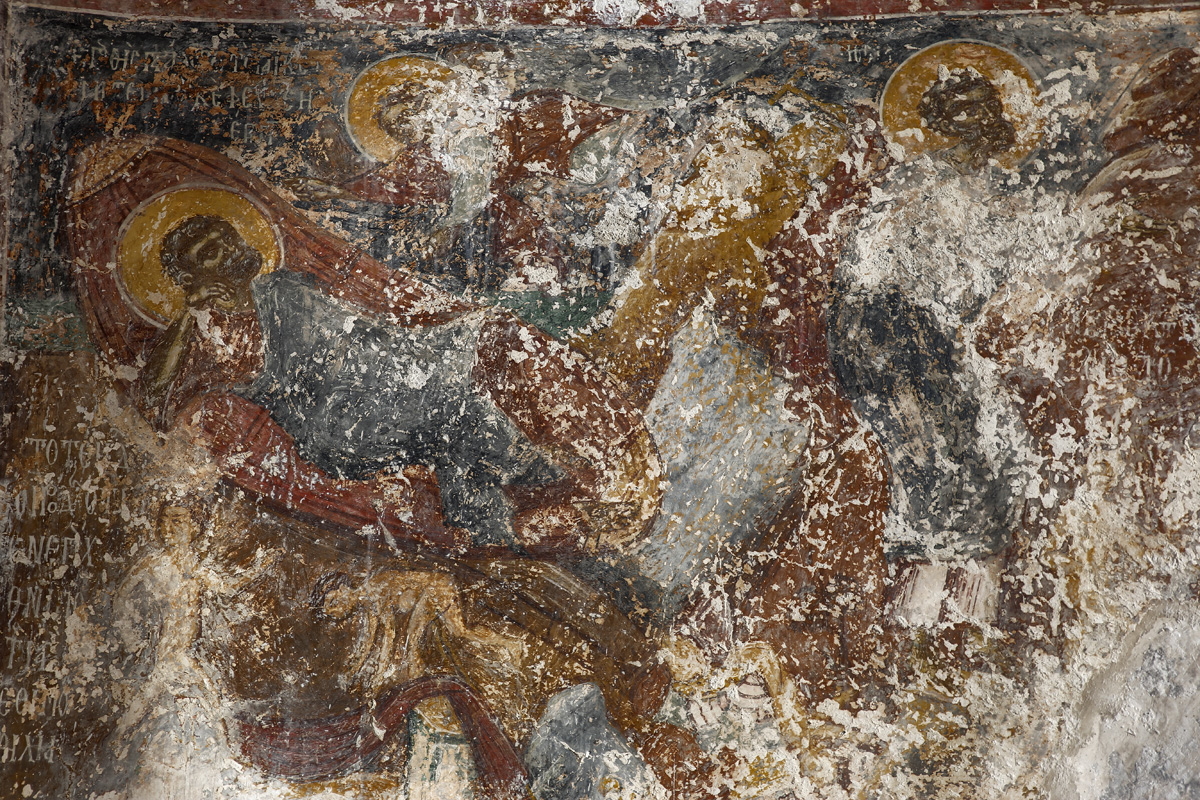
Joseph's dream.
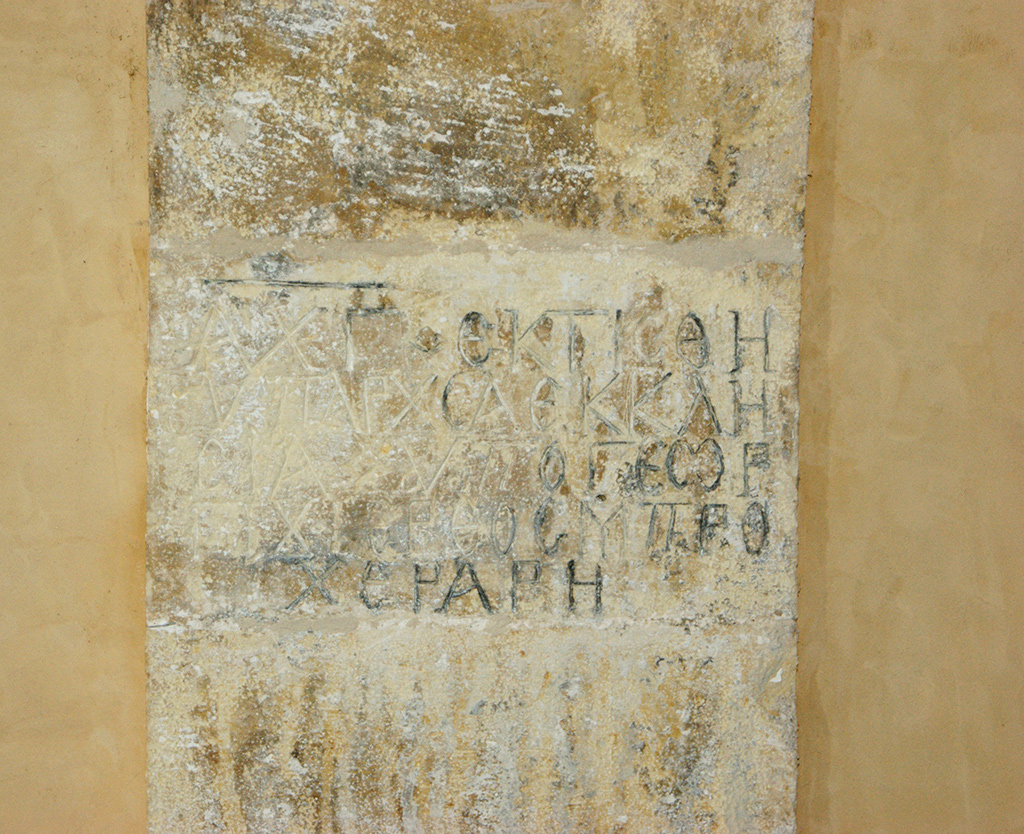
Dedicatory inscription
Dedicatory inscription
In the north nave of the church, dedicated to the Virgin Mary, there is an inscription engraved on a stone of a reinforcing arch displaying the year of construction of the nave and the patron who contributed to its construction. Specifically, it states that a priest named Georgios Broheraris built the nave in 1603.
Photo Gallery
- Old photograph of the monument, western view.
- Old photograph of the monument, eastern view.
- View of the church from the southwest. Aerial photo.

